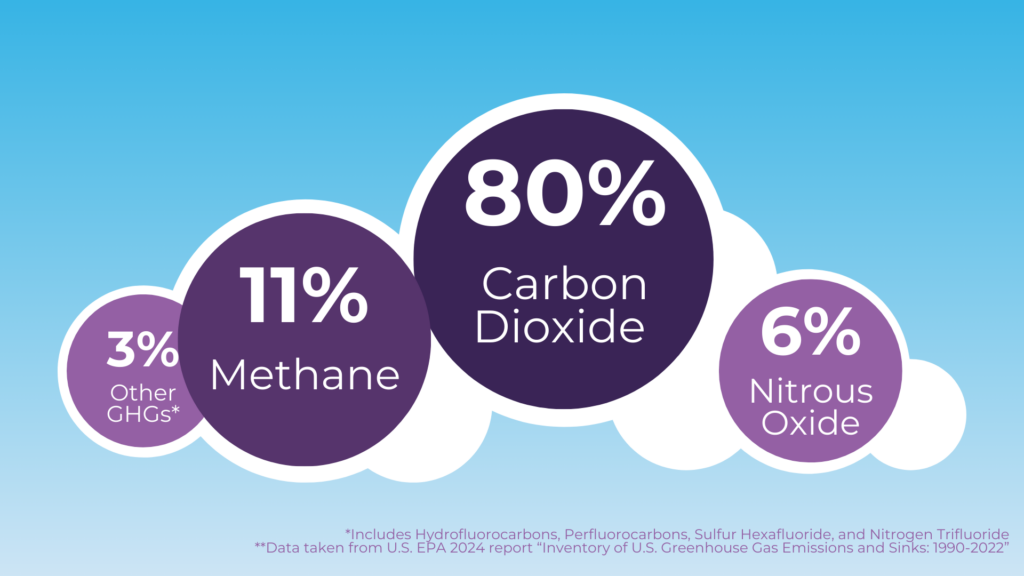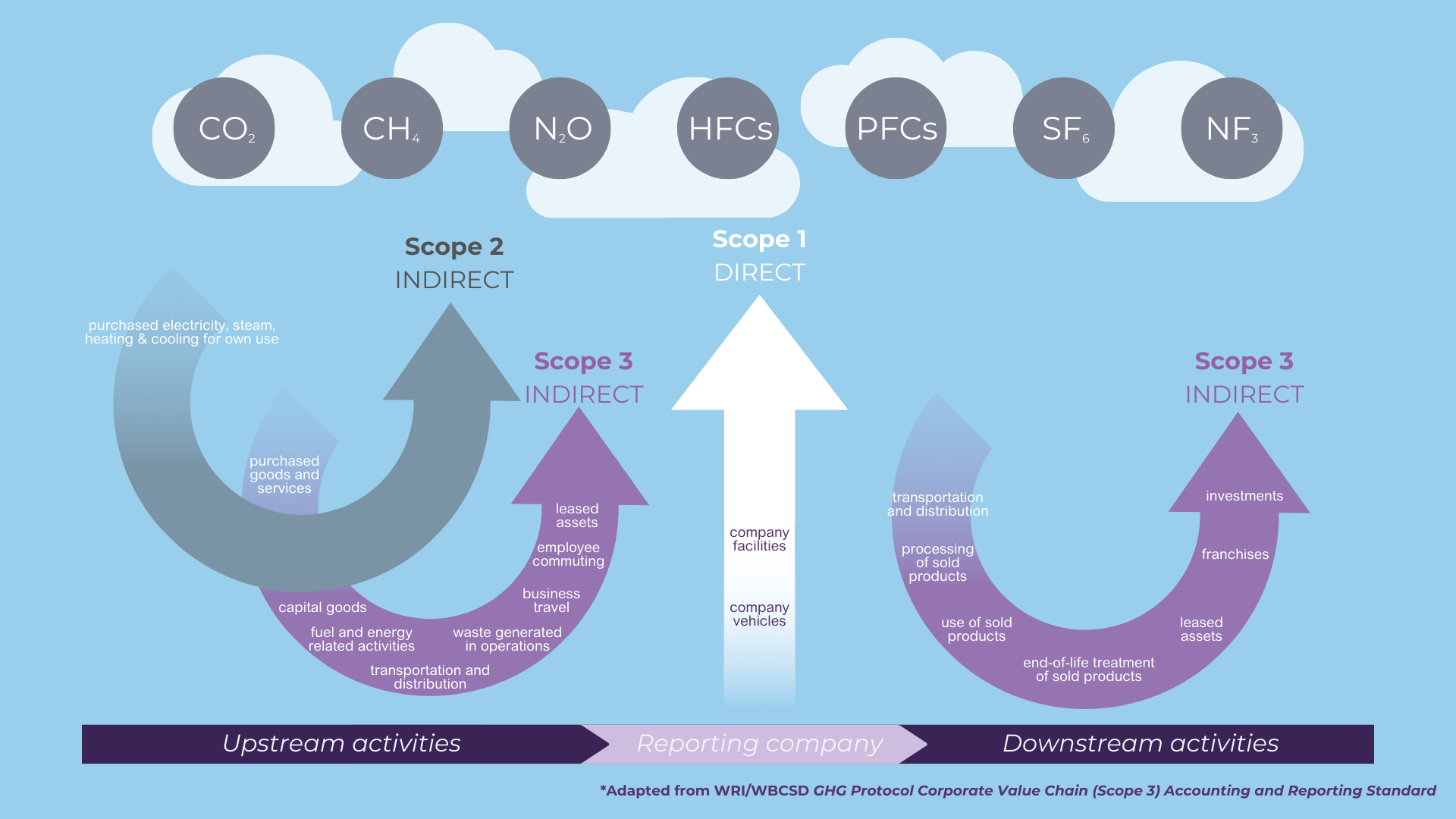What comes to mind for you when you think of climate change? Maybe you think of melting polar caps, rising sea levels, or the natural disasters that are happening more often while becoming more unpredictable. Maybe you’re thinking about the way that your company is being pressured more and more to decarbonize due to growing public awareness and concern, and maybe you don’t understand why this pressure is falling on you.
Believe it or not, climate change impacts more than just coral reefs and rainforests—it affects businesses too. Heatwaves, floods, droughts and other extreme weather events made worse by climate change have been proven to disrupt supply chains, raise insurance costs, and more. Despite the risk climate change poses to business, a study from the Harvard Business Review found that only 11% of sites are fully prepared for climate-related disruptions.

It can be difficult to determine what risks climate change poses to you, especially because these risks vary from country to country and from industry to industry. However, being able to successfully manage climate risks can not only save your company from climate-related harm, but it can also increase your company’s operational efficiency, reduce your operational costs, improve your company’s reputation, and give you a competitive advantage. Understanding decarbonization – what it means and why it matters – can help set your company up for success in these ways and more.

“Waiting to decarbonize is costing your business. Here’s why”
Wanting to know more about the relationship between decarbonization and your bottom line? Our article breaks down the ways decarbonization can lead to cost-savings, among other critical benefits to your business.
Read the full article hereThis comprehensive guide aims to break down important sustainability concepts and equip you with the knowledge and tools necessary to reduce carbon emissions in your business.
Understanding Carbon Emissions
The world of decarbonization is full of terminology and acronyms that can be hard to make sense of. As complicated as they may seem, knowing what these terms mean and how they relate to you and your business is a crucial first-step in your sustainability journey. Let’s break down some of these terms and help you get started.
What is decarbonization?
Decarbonization is a strategy all about cutting down on carbon dioxide emissions and reducing your overall carbon footprint. Beyond just cutting down and producing less CO2, decarbonization also involves shifting away from dirty fossil fuels to cleaner, greener energy sources like solar power, wind energy, and other low-carbon or carbon-free alternatives. Decarbonization can also mean making energy efficiency improvements, making our transportation systems less reliant on polluting fuels, and using innovative technologies like carbon capture and storage.
Decarbonization can protect your business and the planet in the following ways:
Resilience: By reducing carbon emissions, you contribute to mitigating climate change, which in turn helps in reducing the frequency and severity of extreme weather events such as storms, floods, and heatwaves. By doing this, you protect your infrastructure and the communities you operate within.
Regulatory Compliance: Decarbonization can help your organization comply with an ever-evolving landscape of environmental regulations and policies. By staying ahead of regulatory requirements, you can avoid potential penalties and legal risks.
Operational Stability: Transitioning to low-carbon operations can reduce your reliance on fossil fuels, making your operations less vulnerable to supply chain disruptions and price volatility associated with traditional energy sources.
Reputation and Brand Protection: Embracing decarbonization demonstrates your commitment to environmental stewardship and sustainability, which can enhance your brand reputation and reduce reputational risks associated with environmental controversies.

Cost Savings: Decarbonization involves improving the energy efficiency of existing projects and streamlining/optimizing processes that produce a lot of emissions, which leads to energy and cost savings! On top of this, decarbonizing can protect you from long-term costs associated with carbon taxes, higher energy prices, and the need to retrofit facilities in response to changing regulations. (For more information, check out our article breaking down decarbonization-related cost savings!)
Carbon, carbon, carbon… What about the other greenhouse gases?
If you’ve spent any time looking into sustainability, you might have discovered that almost all conversations focus on carbon dioxide and little else, even though carbon dioxide (CO2) is just one of many greenhouse gases that contribute to climate change. So why is it that carbon dioxide has become the cornerstone of climate-related issues?
Simply put, it’s because carbon dioxide is the main greenhouse gas emitted by humans and has the largest total impact on global warming. According to the EPA, carbon dioxide made up 80% of human-produced greenhouse gas emissions in 2022.
This doesn’t mean, however, that the other 20% of greenhouse gas emissions, made up of gases like methane (CH4), nitrous oxide (N20), and fluorinated gases, are unimportant. In fact, when reporting your emissions, leading organizations like the GHG Protocol require you to disclose your emissions of carbon dioxide (CO2), methane (CH4), nitrous oxide (N2O), hydrofluorocarbons (HFCs), perfluorocarbons (PFCs), and sulphur hexafluoride (SF6), if they are emitted at any point in your supply chain. However, these gases have different characteristics than CO2 in terms of how long they stay in the atmosphere or how potent they are, which makes them difficult to compare to each other.

This is why climate scientists have developed emissions factors, or conversion rates that allow you to convert any amount of a greenhouse gas into an amount of CO2 that shares the same global warming potential. This is known as the carbon dioxide equivalent (CO2e). Converting greenhouse gases into their carbon dioxide equivalent helps simplify discussions about environmental impacts so that everyone has a shared language for discussing carbon footprints.
Net Zero: The Gold Standard of Emissions Reduction Target-Setting
Net zero is the ultimate emissions reduction goal for many businesses, and it is no easy feat. As the term suggests, net zero emissions means that the emissions released by a company into the atmosphere are equal to the amount that a company removes from the atmosphere (through carbon offsets or other projects). Technically speaking, it is possible to reach net zero without reducing your emissions, but this is usually costly and an ineffective way to offset your environmental impact.
The Science Based Targets initiative, or SBTi, is a leading organization that helps businesses validate emissions reductions and net-zero targets. According to their guidelines, companies should use carbon offsets or carbon removals for no more than 10% of their total carbon footprint. This means that companies should be reducing anywhere from 90-95% of their total emissions on their own, with carbon offsets representing the last little push to get you all the way to net-zero.

“What Does It Mean To Be Net-Zero”
Unpack net zero concepts even further and learn how it relates to your operations in this article!
Read the full article hereScoping Things Out: Emissions Scopes
A company’s carbon footprint (also known as their emissions portfolio) can be broken down into 3 categories, or scopes.
Scope 1 refers to a company’s direct operational emissions, or the emissions from sources that the company has direct ownership or control over, such as company-owned vehicles or a natural-gas boiler in a company-owned

What are Scope 1 Emissions?
Need more information about direct emissions? Read our article dedicated to unpacking Scope 1 emissions here!
Read the full article hereScope 2 refers to emissions you use to run your operation but come from sources that you don’t directly own. It’s likely that you are getting most of your electricity from an energy grid. Since you don’t own the energy grid but use the electricity it generates for your business, the emissions associated with your energy consumption used would fall under Scope 2. This does NOT mean all emissions produced by the energy grid become your responsibility; rather, you are only responsible for the emissions associated with the exact amount of energy you consumed.
As opposed to Scopes 1 and 2, which represent very distinct segments of your operations, Scope 3 refers to the emissions from everything else in your value chain—upstream and downstream. The Scope 3 emissions for a coffee mug company, for instance, would include the emissions from the production of the coffee mug (which they purchase from a coffee mug manufacturer), the transportation of the coffee mugs to the coffee mug shops, the washing of the coffee mug after it has already been purchased, and more.

The Greenhouse Gas Protocol breaks down Scope 3 into 15 different categories; these refer to a broader classification of emissions sources, such as purchased goods and services, transportation, or waste. These categories provide a structured way to organize and understand different types of emissions. Similarly, an activity refers to specific actions or processes within each category that contribute to greenhouse gas emissions. For example, within the “purchased goods and services” category, activities could include the production of raw materials, manufacturing processes, or distribution activities, each of which may generate emissions.
The 15 Scope 3 categories laid out by the GHG protocol include:
- Purchased Goods and Services
- Capital Goods
- Fuel- and Energy-Related Activities (not included in Scope 1 or Scope 2)
- Upstream Transportation and Distribution
- Waste Generated in Operations
- Business Travel
- Employee Commuting
- Upstream Leased Assets
- Downstream Transportation and Distribution
- Processing of Sold Products
- Use of Sold Products
- End-of-Life Treatment of Sold Products
- Downstream Leased Assets
- Franchises
- Investments
As you can see, Scope 3 encompasses a wide variety of processes and engages with many different entities both up and downstream in your supply chain. Additionally, since companies do not have direct control over their Scope 3 emissions, it can be particularly difficult to get good insights and high-quality data without proper collaboration. These two qualities make Scope 3 emissions both tricky to reduce and important for reaching your decarbonization goals.

“What Are Scope 3 Emissions (And Why Should I Care?)”
Don’t miss our article unpacking Scope 3 emissions and their significance here!
Read the full article hereWhat does it all mean?
As you might have been able to tell, there is much more to decarbonization than meets the eye. Fortunately, there is an ever-growing number of resources available to help you get started. Check out our other articles on decarbonization today!